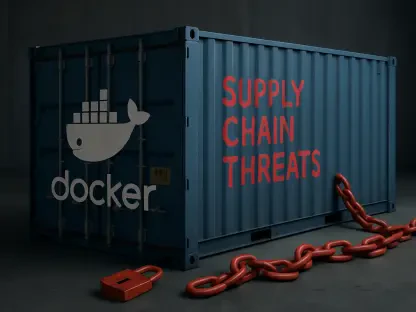Allow me to introduce Maryanne Baines, a renowned authority in cloud technology with extensive experience evaluating cloud providers, their tech stacks, and how their solutions serve various industries. Today, we’re diving into a recent incident involving Microsoft Azure in Western Europe, exploring the technical intricacies of the outage, its impact on services and customers, and the broader implications for cloud resilience. Our conversation touches on the root causes of the disruption, the specific services affected, the recovery process, and what this event reveals about the challenges of ensuring uptime in hyperscale cloud environments.
Can you walk us through the details of the Azure outage that occurred in the West Europe region on November 5th?
Sure, Daniel. On November 5th, Microsoft reported a significant disruption in their West Europe region, which is based in the Netherlands. The issue stemmed from what they described as a “thermal event” that affected the datacenter cooling systems. This led to a subset of storage scale units going offline in a single availability zone, causing service disruptions or degraded performance for many customers. The impact was felt across a wide range of services, and it started around 1700 UTC, with Microsoft issuing updates later that evening.
What does Microsoft mean by a “thermal event,” and how did it impact the cooling systems in the datacenter?
A “thermal event” typically refers to an unexpected rise in temperature within the datacenter environment, often due to hardware overheating or a failure in the cooling infrastructure. In this case, it appears that the cooling systems couldn’t keep up with the heat generated by the hardware, which forced some systems to shut down to prevent damage. This kind of failure can cascade quickly, as servers and storage units rely on stable temperatures to operate reliably.
Which Azure services were most affected by this outage, and were any hit particularly hard?
The outage impacted a broad array of services in the West Europe region, including Virtual Machines, Azure Database for PostgreSQL and MySQL Flexible Servers, Azure Kubernetes Service, Storage, Service Bus, and Virtual Machine Scale Sets, among others. Azure Databricks users specifically faced degraded performance, especially when launching or scaling workloads, which also affected operations like Unity Catalog and Databricks SQL. While all these services took a hit, the impact on storage-related services seemed particularly pronounced due to the nature of the failure.
How did Microsoft detect the initial spike in hardware temperatures that triggered this incident?
Microsoft relies on automated monitoring systems to keep tabs on their datacenter environments. These systems continuously track metrics like hardware temperatures, power usage, and service health. In this case, they detected a spike in temperatures across multiple storage scale units, which also coincided with related service incidents. This early detection is critical because it allows for rapid response, even if, as we saw here, it couldn’t fully prevent the outage.
Can you explain what a storage scale unit is and why its failure in just one availability zone caused such widespread issues?
A storage scale unit is essentially a modular cluster of storage hardware and software designed to handle large-scale data workloads within a datacenter. Think of it as a building block of cloud storage infrastructure. When a unit in a single availability zone went offline due to the thermal event, it disrupted services tied to that specific zone. However, the broader impact came because many customer workloads, even those spread across other zones, depended on data or services hosted in the affected unit. This shows how interconnected these systems are, even with redundancy in place.
Microsoft mentioned that resources in other availability zones were also impacted. Why did this happen despite the design for resilience?
That’s a critical point. The idea behind availability zones is to isolate failures so that if one zone goes down, others can pick up the slack. However, in this incident, resources in other zones were affected because they relied on the storage scale units in the impacted zone. This could be due to data replication dependencies or shared services that weren’t fully isolated. It highlights that while spreading resources across zones improves resilience, it’s not a foolproof guarantee against outages if there are underlying dependencies.
What can you tell us about the recovery process for the affected storage scale units?
Microsoft reported that one of the impacted storage scale units has already been recovered, likely through a combination of cooling system repairs and hardware checks to ensure stability before bringing it back online. For the remaining units, recovery efforts are ongoing, with Microsoft estimating signs of progress within about 90 minutes from their last update. This involves meticulous steps like verifying hardware integrity, restoring data consistency, and gradually scaling services back up to avoid further issues.
How has this outage affected Microsoft’s customers in the West Europe region, and have there been notable reactions?
Customers in the West Europe region, particularly those relying on critical workloads, have experienced significant disruptions or degraded performance. While specific feedback hasn’t been widely publicized yet, it’s safe to assume that businesses running time-sensitive operations—think e-commerce, financial services, or logistics—felt the brunt of this outage. Social media and support channels are likely buzzing with frustration, as unplanned downtime can lead to lost revenue and trust, especially in a key market like the Netherlands.
What does this incident reveal about the limits of relying on multiple availability zones for cloud resilience?
This outage is a stark reminder that while availability zones are a cornerstone of cloud resilience, they’re not a silver bullet. Dependencies between zones, whether through shared storage or networking, can still create ripple effects. It underscores the need for customers to design their applications with failover mechanisms and for providers to ensure true isolation of critical components. Incidents like this push the industry to rethink how redundancy is implemented at every level.
Looking ahead, what is your forecast for the evolution of cloud resilience strategies in light of events like this?
I believe we’ll see a stronger emphasis on multi-cloud and hybrid strategies as businesses look to diversify their risk. Providers like Microsoft will likely invest more in advanced cooling technologies and stricter isolation between availability zones to prevent cascading failures. Additionally, there’ll be a push for better transparency and tools for customers to monitor and mitigate risks themselves. The cloud landscape is evolving fast, and resilience will remain a top priority as dependency on these services continues to grow.









